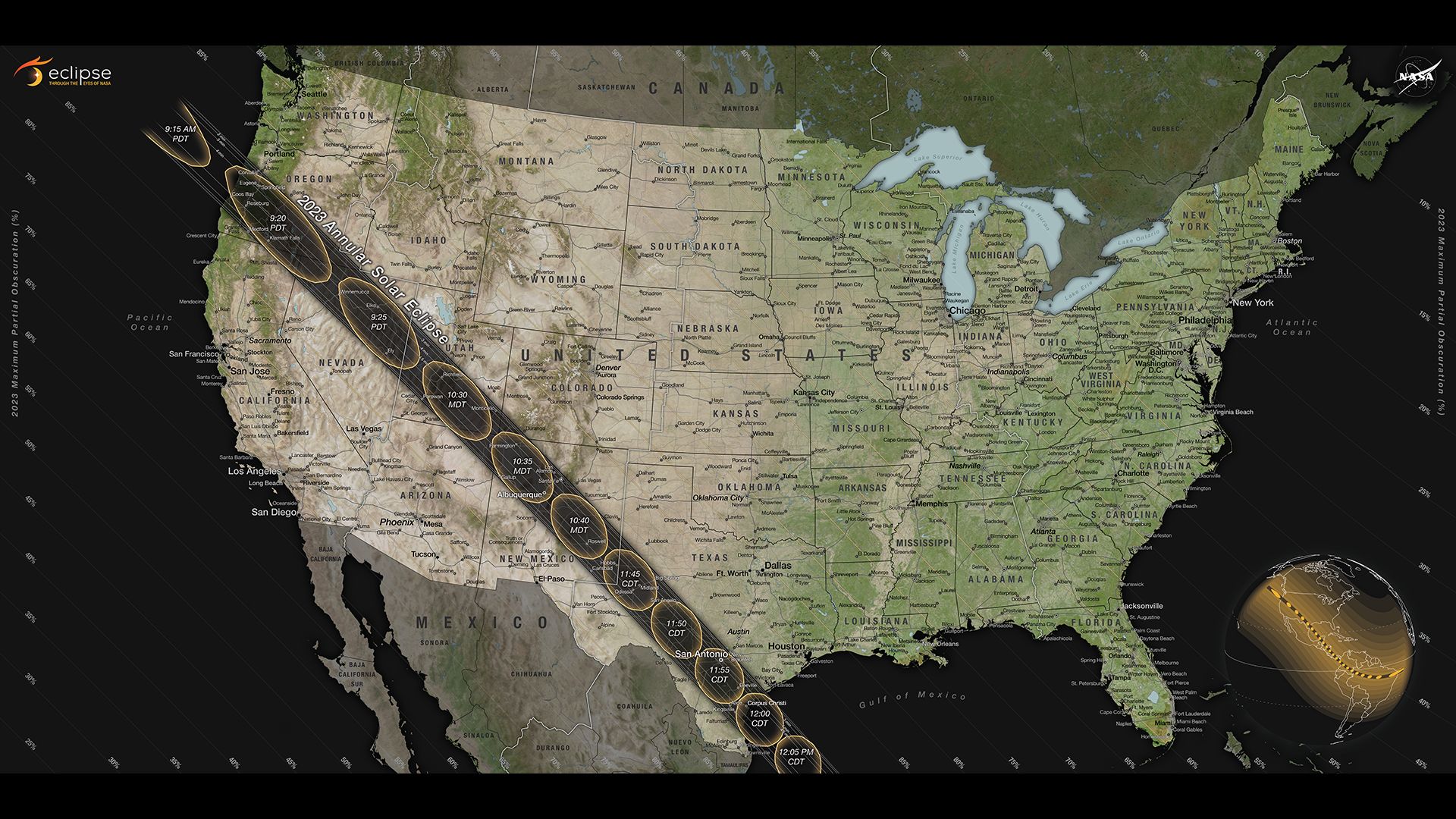New standards in the fight against light pollution are helping bring darker skies to Chile — not only will this protect our view of the stars, but also human health and biodiversity. Chile is an attractive location for astronomers because its skies are great for stargazing, particularly in the Atacama Desert where tall peaks, a stable atmosphere and over 300 clear nights per year on average provide excellent observing conditions. As such, Chile is home to a large number of the world’s most powerful optical telescopes. The European Southern Observatory…
Read MoreTag: Night Sky Photos
Fire in the sky: Chasing the annular solar eclipse 2023 on the Extraterrestrial Highway
ELY, Nevada — The state of Nevada is the perfect place to watch for strange things in the sky. And it’s easy to see why as you head north out of Las Vegas and turn onto state route 375, the “Extraterrestrial Highway.” This straight stretch of windblown road crosses mostly empty desert, offering vast vistas of open sky and long-distance views of the surrounding mountain ranges in the distance. Dotted along the route are UFO– and alien-themed attractions like the Alien Research Center in Crystal Springs, Nevada, a metal Quonset…
Read MoreThe annular solar eclipse of 2023 is underway! See the 1st ‘ring of fire’ photos and video
The first images of the moon passing between the sun and the Earth in a so-called “ring of fire” solar eclipse are coming in and the views are amazing. The moon and sun are aligning in what scientists call an “annular solar eclipse,” in which the moon doesn’t completely cover the sun and leaves a brilliant ring of sunlight visible, giving it a “ring of fire” effect. The solar eclipse will be visible to potentially millions of spectators across several U.S. states from Oregon to Texas, before moving on to…
Read MoreAnnular solar eclipse 2023: Live updates
Refresh 2023-10-06T15:59:38.220Z Ring of fire solar eclipse of 2023 is one week away! The path of annularity crossing the U.S. on October 14, 2023. (Image credit: NASA Scientific Visualization Studio) The stage is set for one of the greatest sun events of 2023, if not the greatest skywatching event of the year! We are officially one week away from the annular solar eclipse of Oct. 14 and is one that could potentially be visible to millions of people across the United States. While not a total solar eclipse, the annular…
Read MoreRosy red nebula glows in gorgeous new European Southern Observatory photo
A rosy red nebula takes center stage in a new photo from the European Southern Observatory (ESO). The expansive cloud of dust and gas, known as IC1284, is an emission nebula, a bright, diffuse cloud of ionized gas that emits its own light. This particular emission nebula, found at the center of the image, glows red from active star formation and the fusion of hydrogen in the region. “Its rosy glow comes from electrons within the hydrogen atoms: they’re excited by the radiation from young stars, but then they lose…
Read MoreBrilliant Harvest Moon, the last supermoon of 2023, wows stargazers around the world (photos)
The summer of 2023 has been a treat for full moon fans. Since July, we’ve seen four supermoons in a row, including the rare Super Blue Moon Moon of August and this weekend, the final supermoon of the year, the Harvest Moon of September, gave skywatchers the final lunar thrill of the season. When the moon is at or near its perigee, the closest point in its orbit with Earth, it can appear as much as 30% brighter and 14% larger in the sky, though it’s typically hard to spot…
Read MoreLasers cut through star trails in beautiful photo from the European Southern Observatory
The European Southern Observatory (ESO) shared a beautiful new image of stars trailing across the night sky. It was taken at the ESO’s Paranal Observatory, located in the Chilean Atacama Desert. The observatory is home to the Very Large Telescope (VLT), which consists of four Unit Telescopes and four smaller, movable Auxiliary Telescopes, like the one in the foreground of the image on the right. Astronomers used a long exposure technique in which the night sky is photographed over several hours, capturing the movements of stars as they travel overhead.…
Read More


